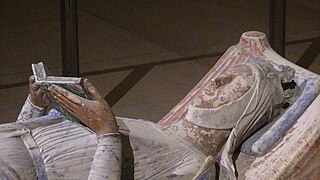
Eleanor of Aquitaine was Queen of France from 1137 to 1152 as the wife of King Louis VII, Queen of England from 1154 to 1189 as the wife of King Henry II, and Duchess of Aquitaine in her own right from 1137 until her death in 1204. As the heiress of the House of Poitiers, which controlled much of southwestern France, she was one of the wealthiest and most powerful women in western Europe during the High Middle Ages. She was a patron of poets such as Wace, Benoît de Sainte-Maure, and Bernart de Ventadorn. She was a key leading figure in the Second Crusade.

Ivanhoe: A Romance by Walter Scott is a historical novel published in three volumes, in 1819, as one of the Waverley novels. Set in England in the Middle Ages, it marked a shift away from Scott’s prior practice of setting stories in Scotland and in the more recent past. It became one of Scott’s best-known and most influential novels.
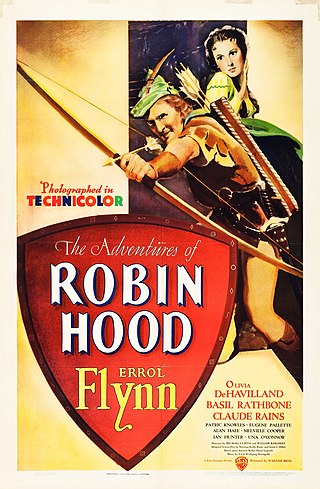
The Adventures of Robin Hood is a 1938 American Technicolor epic swashbuckler film from Warner Bros. Pictures. It was produced by Hal B. Wallis and Henry Blanke, directed by Michael Curtiz, and stars Errol Flynn, Olivia de Havilland, Basil Rathbone, Claude Rains, Patric Knowles, Eugene Pallette, and Alan Hale. The film is particularly noted for its Academy Award-winning score by Erich Wolfgang Korngold.

Sir Guy of Gisbourne is a character from the Robin Hood legends of English folklore. He first appears in "Robin Hood and Guy of Gisborne", where he is an assassin who attempts to kill Robin Hood but is killed by him. In later depictions, he has become a romantic rival to Robin Hood for Maid Marian's love.

Maid Marian is the heroine of the Robin Hood legend in English folklore, often taken to be his lover. She is not mentioned in the early, medieval versions of the legend, but was the subject of at least two plays by 1600. Her history and circumstances are obscure, but she commanded high respect in Robin’s circle for her courage and independence as well as her beauty and loyalty. For this reason, she is celebrated by feminist commentators as one of the early strong female characters in English literature.
"Robin Hood and the Golden Arrow" is Child ballad 152. It features an archery competition for a golden arrow that has long appeared in Robin Hood tales, but it is the oldest recorded one where Robin's disguise prevents his detection.
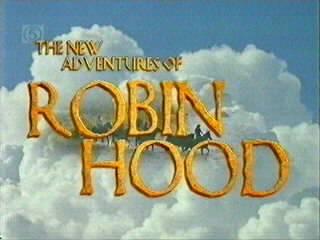
The New Adventures of Robin Hood is an action adventure television series that premiered on January 13, 1997, on TNT. The show was based on the legend of Robin Hood, the English folk hero, and was filmed in Vilnius, Lithuania. It was produced and distributed by Dune Productions, M6, and Warner Bros. International.

The folkloric hero Robin Hood has appeared many times, in many different variations, in popular modern works.
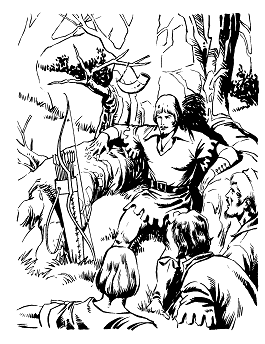
The Merry Men are the group of outlaws who follow Robin Hood in English literature and folklore. The group appears in the earliest ballads about Robin Hood and remains popular in modern adaptations.
Marsha Canham is a Canadian writer of historical romance novels since 1984. She has won two Romantic Times Lifetime Achievement Awards, as well as multiple awards for individual books including Best Historical of the Year, Best Medieval of the Year, Best book of the Year, Storyteller of the Year, Best Swashbuckler of the Year.

The Zany Adventures of Robin Hood is a 1984 American made-for-television comedy film directed by Ray Austin and starring George Segal, Morgan Fairchild, Roddy McDowall, Janet Suzman and Tom Baker. It is a parody of the Robin Hood story.
Richard I of England has been depicted many times in romantic fiction and popular culture.

John of England has been portrayed many times in fiction, generally reflecting the overwhelmingly negative view of his reputation.
William II of England has been depicted in various cultural media.

The Outlaws of Sherwood is a retelling of the legend of Robin Hood by Robin McKinley. In McKinley's afterword, she says, "The retellings through the centuries have echoed concurrent preoccupations." The story includes both the traditional Robin Hood characters — Little John, Much, Friar Tuck, Marian and Alan-a-dale — and characters of McKinley's own invention. Notably, three of the most important characters are women, all of whom escape marriage to prospective spouses chosen by their fathers.

Lady of the Forest: A Novel of Sherwood is a 1992 historical fiction novel by American author Jennifer Roberson. A re-telling of the Robin Hood legend from the perspective of twelve characters associated with the legend, the story centers around English noblewoman Lady Marian FitzWalter's encounters with Lord Robert of Locksley and his scheming rival the Sheriff of Nottingham amid the backdrop of Prince John's schemes – he aims to increase his own wealth and power at the expense of post-Conquest England and his brother, King Richard.
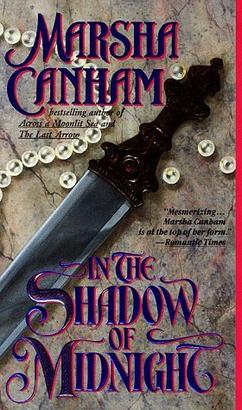
In the Shadow of Midnight is a 1994 historical novel by Canadian author Marsha Canham, the second instalment of her "Medieval" trilogy inspired by the Robin Hood legend set in 13th-century England. The story centres on the rescue of Princess Eleanor of Brittany, the rightful heiress to the English throne, who is held captive by her uncle King John. The novel was published by Dell Publishing in 1994 as a sequel to Canham's 1991 story, Through a Dark Mist.

Through a Dark Mist is a 1991 historical fiction novel by Canadian author Marsha Canham, the first instalment of her "Medieval" trilogy inspired by the Robin Hood legend set in 13th-century England. The story centers on the rivalry and enmity between two brothers each claiming to be one man – Lucien Wardieu, Baron De Gournay. The heroine, Lady Servanne de Briscourt, finds herself caught in the middle when she is betrothed to one but falls in love with the other. The novel was published by Dell Publishing in 1991.
William Marshal, 1st Earl of Pembroke was an Anglo-Norman soldier and statesman. He served five English kings – Henry II, his sons the "Young King" Henry, Richard I, and John, and John's son Henry III.












